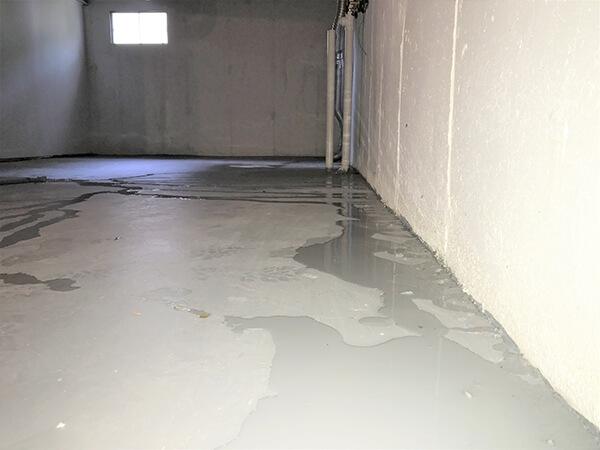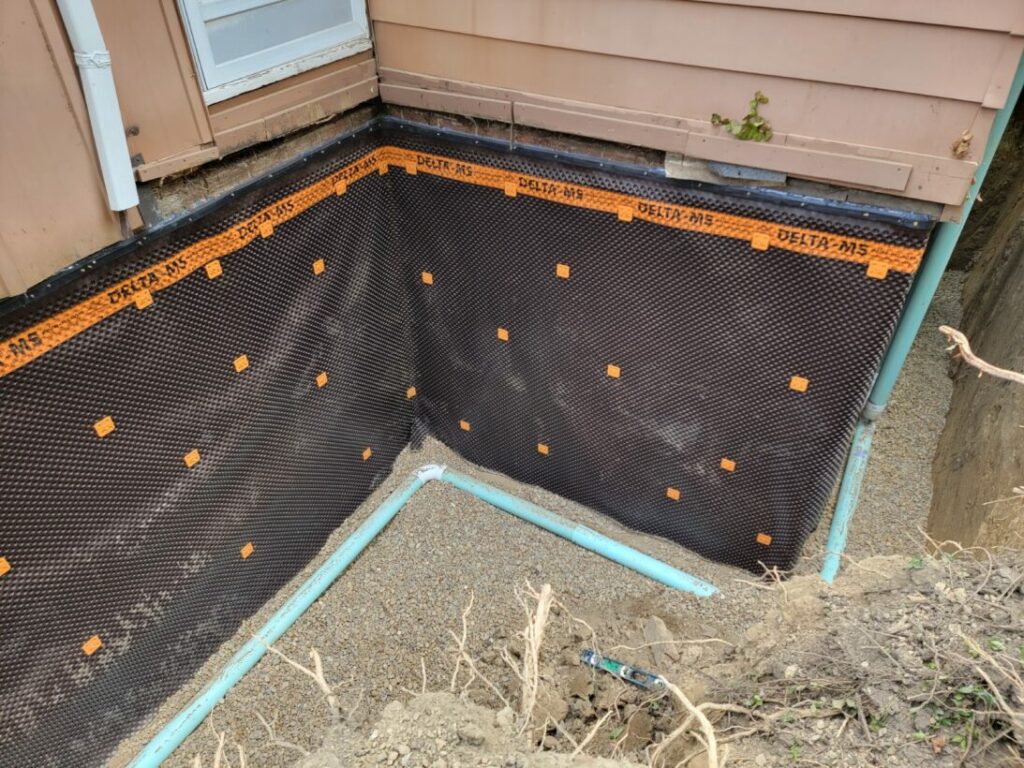The Ultimate Guide to Basement Waterproofing: Preventing Mold, Rot, and Costly Repairs
Wiki Article
How Basement Waterproofing Functions: A Comprehensive Guide for Your Home
Cellar waterproofing is crucial for protecting homes from water damage. Numerous approaches exist to resolve dampness problems, each tailored to certain causes. Property owners need to comprehend these choices to pick the most effective service for their demands - Water Solutions. The efficiency of these methods depends on the ideal materials and methods. What are one of the most typical approaches, and exactly how can they be applied properly? This overview will certainly explore these vital aspectsComprehending the Root Causes Of Cellar Wetness
Although basements are frequently designed to be dry and practical areas, they can succumb to dampness because of different variables. One primary cause is bad drain around the structure, which can lead to water merging and seepage. Furthermore, heavy rainfall or quick snowmelt can bewilder drainage systems, exacerbating dampness issues. Another considerable element is the all-natural humidity present in the ground, which can permeate via floorings and walls, especially in older homes with much less efficient obstacles. Cracks in the structure might likewise allow water invasion, particularly during durations of hefty precipitation. Furthermore, pipes leaks within the basement can add to moisture buildup, producing a setting conducive to mold growth. Inadequate air flow can trap humidity, worsening the general moisture problem. Recognizing these causes is important for home owners looking for efficient remedies to stop cellar moisture problems.Sorts Of Basement Waterproofing Approaches
Basement waterproofing methods are essential for shielding homes from dampness damage and maintaining a secure living environment. These techniques can be generally categorized into external and indoor solutions. Interior waterproofing usually entails the installment of drain systems, sump pumps, and vapor obstacles. These systems work to divert water away from the cellar and avoid moisture from permeating through the walls or floor.On the various other hand, exterior waterproofing focuses on avoiding water from getting in the home in the first place. This can consist of excavation around the foundation, using water resistant coverings, and mounting drainage tiles to redirect water away from the structure. Additionally, some property owners might decide for a combination of both interior and exterior approaches to ensure comprehensive defense. Eventually, the selection of waterproofing approach relies on the particular conditions of the home and the level of dampness existing in the basement.Materials Utilized in Waterproofing Solutions

Different products are employed in waterproofing solutions to enhance the efficiency of both interior and exterior methods. Frequently utilized products include liquid membrane layers, which develop a seamless barrier versus wetness. These membranes are commonly made from polyurethane or rubberized asphalt, supplying flexibility and durability. Furthermore, cementitious waterproofing items are popular for their convenience of application and strong bond to surfaces.For outside this link applications, materials such as drain boards and geotextiles are efficient in redirecting water far from structures. Squashed rock and gravel are likewise used why not try here in drain systems, advertising proper water flow and lessening stress buildup. In some instances, specialized finishings and sealers, like silicone or epoxy, are related to offer additional protection versus water seepage. Together, these products play a crucial role in ensuring that a cellar continues to be dry and shielded from water damage.
Steps to Water-proof Your Cellar
Waterproofing a basement includes a systematic strategy to properly avoid water breach and damages. The very first step is to inspect the outside of the home, looking for cracks or gaps in the foundation. These need to be sealed with a proper water resistant sealer. Next, validate that downspouts and rain gutters are functioning correctly and guiding water away from the foundation.After resolving outside problems, the interior must be assessed. Installing a water resistant membrane layer on cellar walls can supply added defense. Sump Pump Installation And Replacement. It's also a good idea to apply a sump pump system to manage any kind of water accumulation.Finally, rating the landscape around the home can help guide water away from the foundation, additional lowering the threat of water infiltration. By following these steps faithfully, homeowners can produce a robust protection against cellar flooding and dampness troublesUpkeep and Prevention Tips for a Dry Basement
Normal maintenance and proactive steps are key to ensuring a dry cellar long after preliminary waterproofing initiatives. Homeowners need to consistently check seamless gutters and downspouts, ensuring they straight water away from the structure. It is vital to maintain these clear of debris to avoid overflow. Furthermore, maintaining correct rating around the home assists network water far from the structure.Checking for fractures in walls or floors is essential, as these can allow wetness seepage. Any kind of recognized cracks need to be quickly secured with suitable products. Setting up a sump pump can provide extra defense against flooding.Humidity degrees in the basement ought to likewise be kept track of, as high humidity can lead to mold growth. Using a dehumidifier can aid maintain a comfy setting. Guaranteeing appropriate air flow in the basement aids in minimizing dampness buildup, protecting the stability of the waterproofing system over time.Frequently Asked Inquiries
The Length Of Time Does Cellar Waterproofing Normally Last?
The long life of cellar waterproofing frequently varies based on look at this now materials and installation top quality. Normally, it can last from 5 to one decade, with some systems possibly withstanding longer if correctly preserved and monitored in time.Can I Water-proof My Cellar Myself?
The individual considered whether to water resistant their basement separately. While do it yourself options exist, they require understanding of products and techniques. Specialist solutions guarantee effective results, typically surpassing the prospective risks and challenges connected with self-installation.
What Are the Signs of Inadequate Waterproofing?
Signs of inadequate waterproofing consist of persistent wetness, mold development, moldy smells, peeling off paint, and water spots on floors or wall surfaces. Property owners need to attend to these issues without delay to avoid more damage and preserve a healthy and balanced living atmosphere.

Does Cellar Waterproofing Rise Home Value?
Cellar waterproofing can boost a home's value by stopping water damage and boosting habitable space. Potential customers commonly prioritize dry cellars, making waterproofing a useful investment that adds to total residential or commercial property appeal and bankability.Exactly How Much Does Basement Waterproofing Price usually?
The typical expense of basement waterproofing typically varies from $1,500 to $5,000, differing based on aspects such as task dimension, technique made use of, and neighborhood market conditions. Homeowners should get several quotes for accurate estimates. Basement waterproofing is vital for safeguarding homes from water damages. Basement waterproofing methods are necessary for shielding homes from moisture damage and keeping a secure living atmosphere. These systems function to divert water away from the cellar and avoid wetness from permeating via the walls or floor.On the other hand, outside waterproofing concentrates on stopping water from entering the home in the first place. The longevity of cellar waterproofing frequently varies based on materials and setup high quality. Basement waterproofing can improve a home's value by stopping water damages and boosting livable space.Report this wiki page